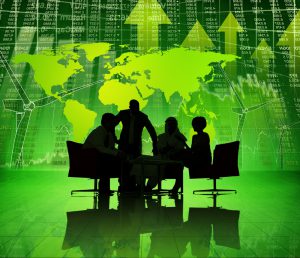Share This
Related Posts
Tags
Investing in Efficiency
By Joel Nelson on Sep 27, 2018 in Energy
The importance of technology, including solutions provided by Yardi, in improving building energy perform ance is well documented. Perhaps less widely known, but no less crucial, is the role energy-oriented financial incentives play in helping property owners afford to invest in energy efficiency upgrades.
ance is well documented. Perhaps less widely known, but no less crucial, is the role energy-oriented financial incentives play in helping property owners afford to invest in energy efficiency upgrades.
Until recently, the Institute for Market Transformation (IMT) noted in a recent article, “building owners seeking more energy-efficient buildings had to seek out nontraditional financing and keep their energy upgrades separate from a traditional mortgage.” Today, a growing number of multifamily as well as commercial and affordable housing mortgages include sustainability incentives.
Fannie Mae and Freddie Mac have emerged as leaders in this new era of energy-efficiency financing. Under Freddie Mac’s Multifamily Green Advantage® suite of offerings, property owners who commit to reducing energy or water consumption by at least 25%, as verified by EPA’s ENERGY STAR® Portfolio Manager®, can receive better pricing and funding to make those improvements. Properties already green-certified may be eligible for rewards.
“We’ve purchased nearly $18 billion in loans and helped finance 184,000 units in just the first 16 months of the program since launch in 2016. We’re proud to be making a real difference for borrowers, renters and the environment,” Freddie Mac said in a November 2017 statement. In May 2018, Richard Meyer, a Freddie Mac official presenting on a panel at a Yardi Executive Briefing, reported $21.7 billion in financing to date.
Meanwhile, Fannie Mae’s green financing for multifamily properties has offered mortgage financing to cover energy and water efficiency improvements in apartment buildings and cooperatives since 2012. Through 2017, the program has contributed to the upgrading of 248,000 units with new equipment, saving enough electricity to power 80 million cell phones and enough water to fill 42 billion glasses. “These improvements improve the property’s bottom line with lower utility costs, improve the quality and affordability of housing for tenants, and increase the property’s environmental sustainability,” the Fannie Mae website says. Green financing comprises more than 40% of Fannie Mae’s multifamily loans – about $31 billion during 2017.
Some smaller and nontraditional channels, such as community development financial institutions (CDFIs), offer alternative financing. One CDFI, New York City’s Community Preservation Corporation, underwrites multifamily property financing for energy efficiency improvements into its traditional first-mortgage loans.
Whichever program is used, it’s clear that property owners benefit. IMT Executive Director Cliff Majersik, speaking at the May 2018 Yardi Executive Briefing, said that a soon-to-be-released study of 50 green-certified residential buildings shows that those properties averaged $6 higher revenue per square foot per year than non-certified buildings; after accounting for some increased expenses, the NOI per square foot increased by more than $4.50.
More recently, the IMT reported on a six-floor, 34,600-square-foot multifamily walk-up for which New York’s Community Preservation Corporation provided $1.4 million in construction and mortgage financing for a roof-to-cellar renovation. New LED lighting, low-flow showerheads and faucets, refrigerators and other upgrades reduced the property’s annual utility cost by $23,000. Prior to the overhaul, the owner historically spent about $2,210 per apartment on annual utility expenses; the retrofit decreased the cost to $1,540 per apartment, an annual savings of about 30%.
“Key [market] players . . . must be aware of critical building components that affect energy efficiency—and be willing to integrate these details into their loan proposals. Mortgage brokers have a unique ability to impact loan amounts when successfully factoring in energy efficiency [and] can help leverage all players in a buildings lifecycle and acknowledge that investing in energy efficiency is both good for business and good for the environment,” says the July 2018 IMT article, which is available in its entirety here.
